Svbony SV503 80ED F7 Doublet Refractor review
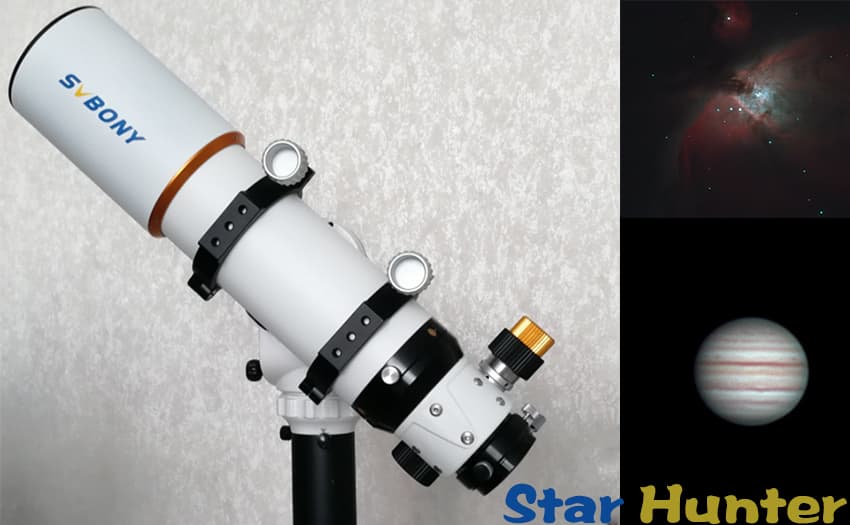
Svbony SV503 80ED F7 Doublet Refractor review
1. Introduction
Svbony provided SV503 80ED F7 Doublet Refractor for my review. This is a small 80mm refractor with a doublet lens, one of which is made of S-FPL51 glass. The use of ED glass provides a significant reduction in color halo (longitudinal chromatic aberration) around bright objects compared to a classic achromatic refractor with the same focal length. Also for review, I received a native Svbony SV193 0.8x field-flattener reducer for this specific refractor.
1. Declared specifications:
The telescope is supplied in a double cardboard box weighing 3.7 kg. The foam material and a sheet of foam at the bottom inside reliably protect the optical tube from damage during transportation. The optical tube is additionally packed in a plastic bag.
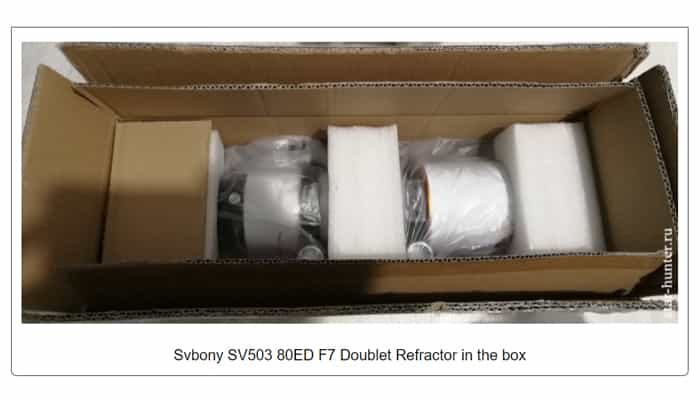
The tube is very compact, especially in comparison with the classic “long” refractor, but at the same time it is massive. Almost the entire body is made of metal. The workmanship is excellent. The measured weight of the tube with metal rings and caps is 3 kg. The inner diameter of the rings is 89 mm. There is no finder shoe.
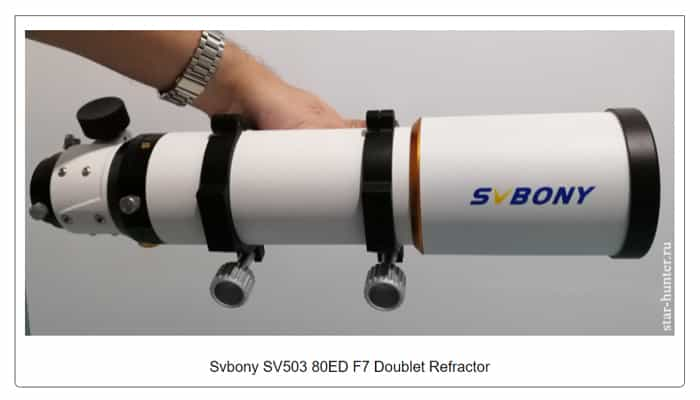
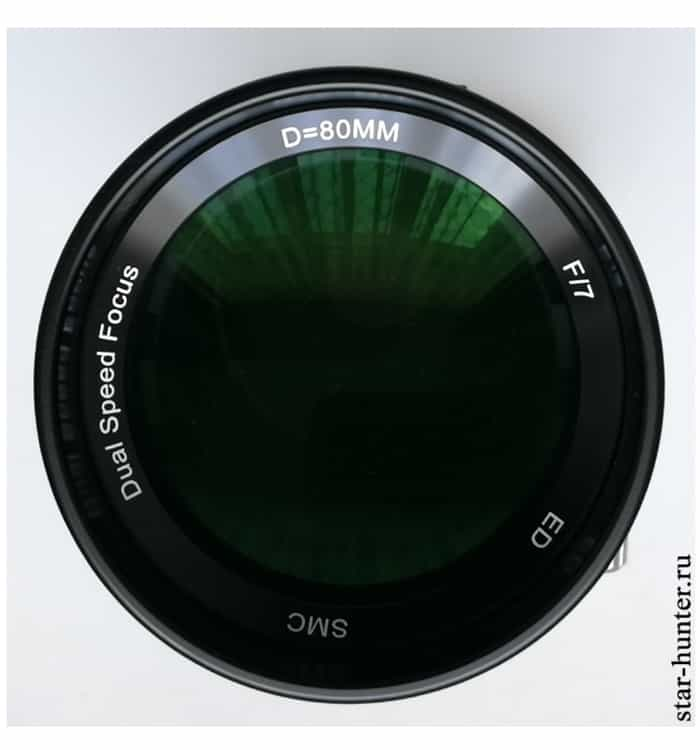
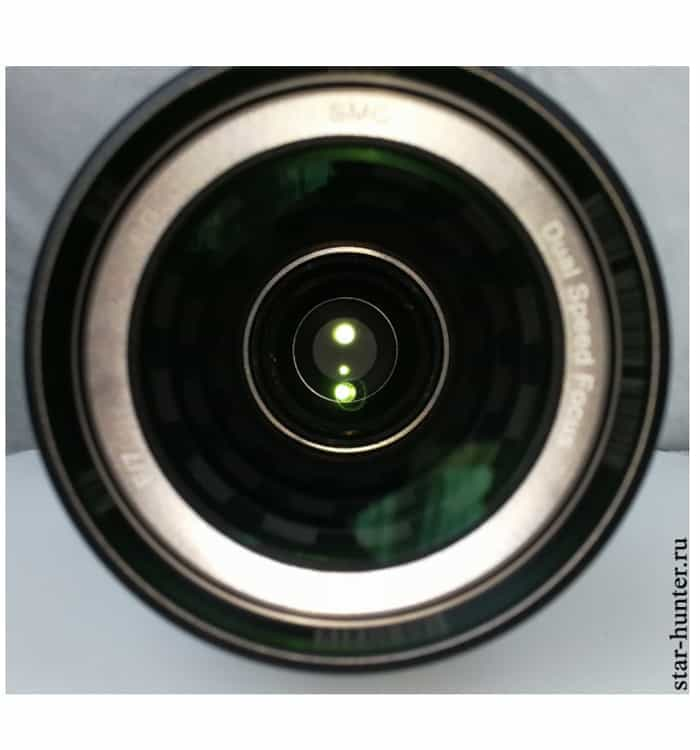
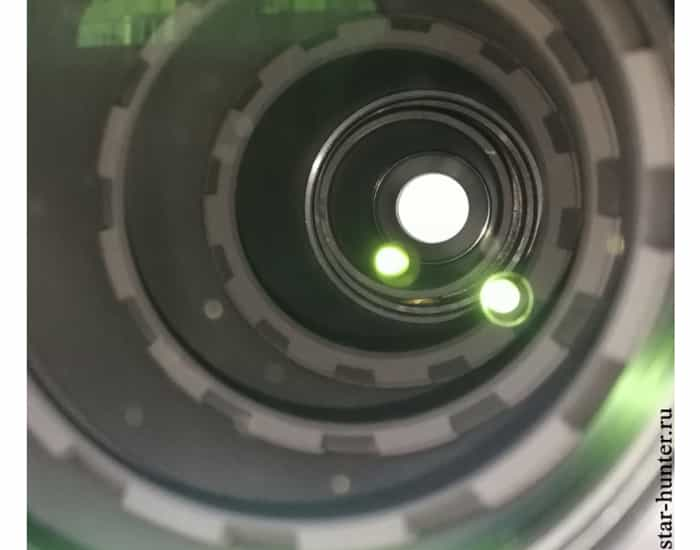
The measured diameter of the focuser is 50.80 mm
Focuser travel – 90.76 mm
Focuser gear ratio is 1:8.5, although 1:10 is declared. That is, one revolution of the large knob accounts for eight and a half revolutions of the small knob.
Rotation of the focuser knob is smooth, focusing is comfortable even at high magnification. You can also rotate the entire focuser around the optical axis of the telescope by loosening one knurled screw.
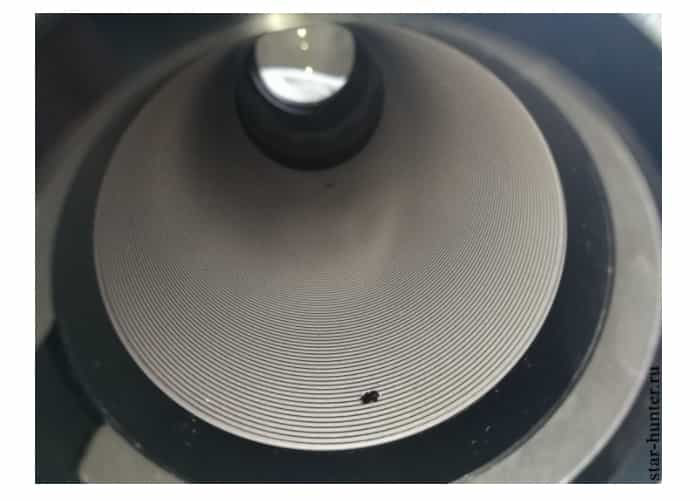
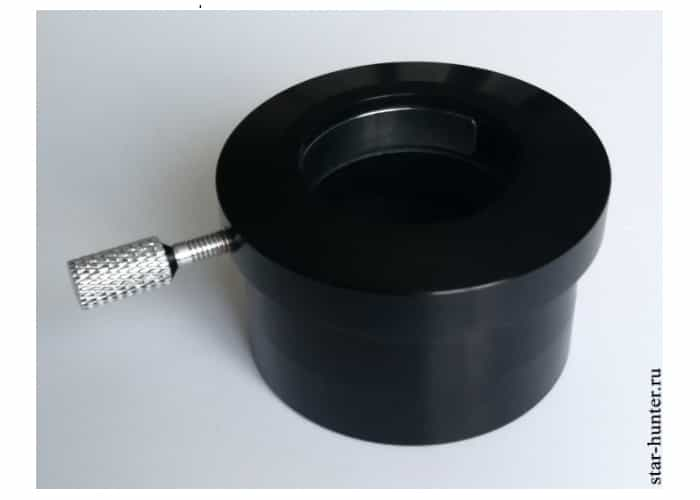
2. SV193 reducer
The reducer is delivered in a cardboard box with protective material.
An additional extension ring is immediately screwed on by the manufacturer.
Reducer length with ring 52.8 mm, without ring 44.44 mm.
Ring thickness 7.89mm + thread 5.31mm
Inlet luminous diameter – 43.93 mm.
Outlet luminous diameter – 39.39 mm
Front lens recessed 18.24 mm from the edge
Tail thread (external) – 47.94 mm
Inlet thread (internal) – 47.24 mm
When focusing at infinity with an SLR camera, the focuser tube extends 45 mm.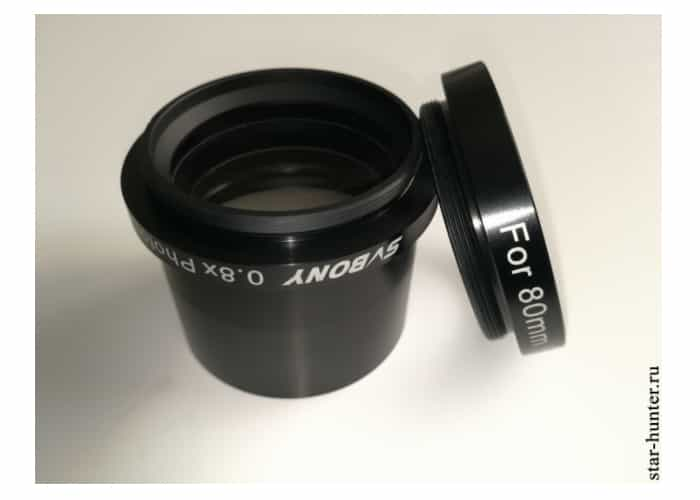
3. Test results
1. Planets
During visual observations of Jupiter with Meade HD-60 6.5 mm (86x) and Levenhuk LER 3 mm (187x) eyepieces, the telescope showed very small chromatic aberration (very weak blue violet halo). 4-5 belts are visible, as well as some details in the belts. At the same time, the sharpness and contrast of the image even at 187x magnification were good – for the Moon, Saturn or Mars, you can confidently use a magnification of up to 200x. A chromatic halo was visible on the star Rigel. Diffraction pattern without any rays and deformations.
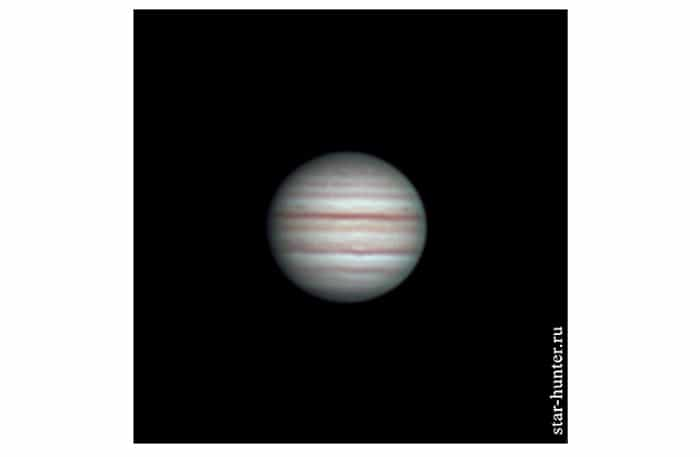
Equipment
-Svbony SV503 80ED F7 Doublet Refractor Telescope OTA
-Sky-Watcher AZ-GTi mount
-Barlow lens NPZ 2x
-ZWO ADC
-QHY IR-cut filter
-QHY5III462C camera.
Stacking of 1000 frames from 6047.
Source files
A close examination of the addition results shows that the red channel is slightly blurred and with a slight halo (spherochromatism), the green is sharp and without spherical aberration. There is chromatism in the blue channel. In total, a mixture of spherochromatism in red and chromatism in blue gives a purple halo. But visually, when observing Jupiter, the halo is very weak and does not interfere with observations at all.
Equipment:
-Svbony SV503 80ED F7 Doublet Refractor Telescope OTA
–Sky-Watcher AZ-GTi mount
-filter ZWO IR-cut
-camera ZWO ASI183MC.
Stacking of 100 frames from 2223 with Autostakkert, wavelets and deconvolution with AstroSurface.
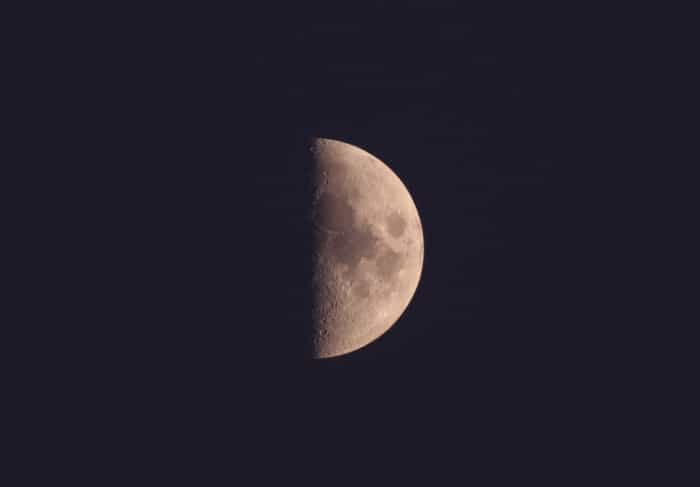
Svbony SV503 80ED F7 Doublet Refractor Telescope OTA
-Svbony 0.8x reducer
-Sky-Watcher AZ-GTi mount
-Canon 550Da camera (ISO 100, 1\200 с).
2. Deep-sky objects
When photographing the Orion Nebula, colored halos are visible around bright stars. Without a reducer, the stars at the edges of the field of view turn into sticks elongated from the center. There is noticeable vignetting (darkening of the corners).
With a 0.8x reducer with the same shooting parameters, the image quality is noticeably improved, and the aperture ratio also increases. Vignetting is reduced.

Svbony SV503 80ED + Canon 550Da
With a 0.8x reducer with the same shooting parameters, the image quality is noticeably improved, and the aperture ratio also increases. Vignetting is reduced.
The Optolong L-eNhance clip filter effectively cuts off blue and purple halos around the stars, as well as flare from city lights.
Equipment:
-Svbony SV503 80ED F7 Doublet Refractor Telescope OTA
-Svbony 0.8x reducer
-Optolong L-eNhance 1.25″ filter
-QHY5III462C camera
-Sky-Watcher AZ-GTi mount
Full calibration with PIPP, stacking 594 frames per 0.5 s with Fitswork, wavelets with AstroSurface.
Source files









Willie Radke
Hello svbony.com owner, Your posts are always well-supported by facts and figures.
svbony Elena Author
Thank you for your support.